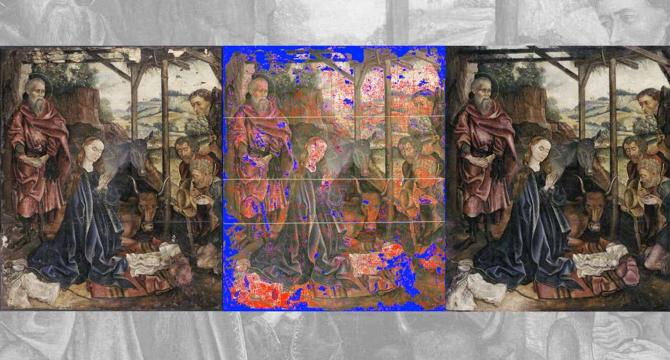COSMOS
3w
87

Image Credit: COSMOS
New AI-driven approach restores damaged paintings in just hours
- A new AI-driven method has been developed by a PhD student in the US for restoring damaged paintings faster and cheaper than traditional approaches.
- The technique involves using artificial intelligence to generate a 'digitally restored' version of the damaged painting, printed on a thin polymer film and applied as a mask on top of the artwork.
- This method could allow conservators to restore lower value paintings with limited budgets, opening up potential for more art to be displayed.
- The process involves scanning the cleaned painting, using AI algorithms to analyze and restore it virtually, and creating a map for filling in lost regions with the correct colors.
- The restoration map is then printed onto a polymer film, applied to the painting, and can be dissolved in the future by conservationists, maintaining reversibility.
- This new restoration process is estimated to be 66 times faster than traditional methods and creates a digital record of the intervention for future conservationists.
- Concerns are raised about the long-term effects of the film on the paintings, especially regarding potential damage from the trapped air layer between the painting and the mask.
- The method is more suitable for flat oil paintings on solid bases, while topographically complex oil paintings may not be compatible due to issues like optical defects and misalignment.
- It's important to involve conservators in the application of this method to ensure it aligns with conservation principles and respects the artist's original style.
- The researcher behind the method emphasizes the need for ongoing development and accurate implementation to refine restoration techniques further.
Read Full Article
5 Likes
For uninterrupted reading, download the app